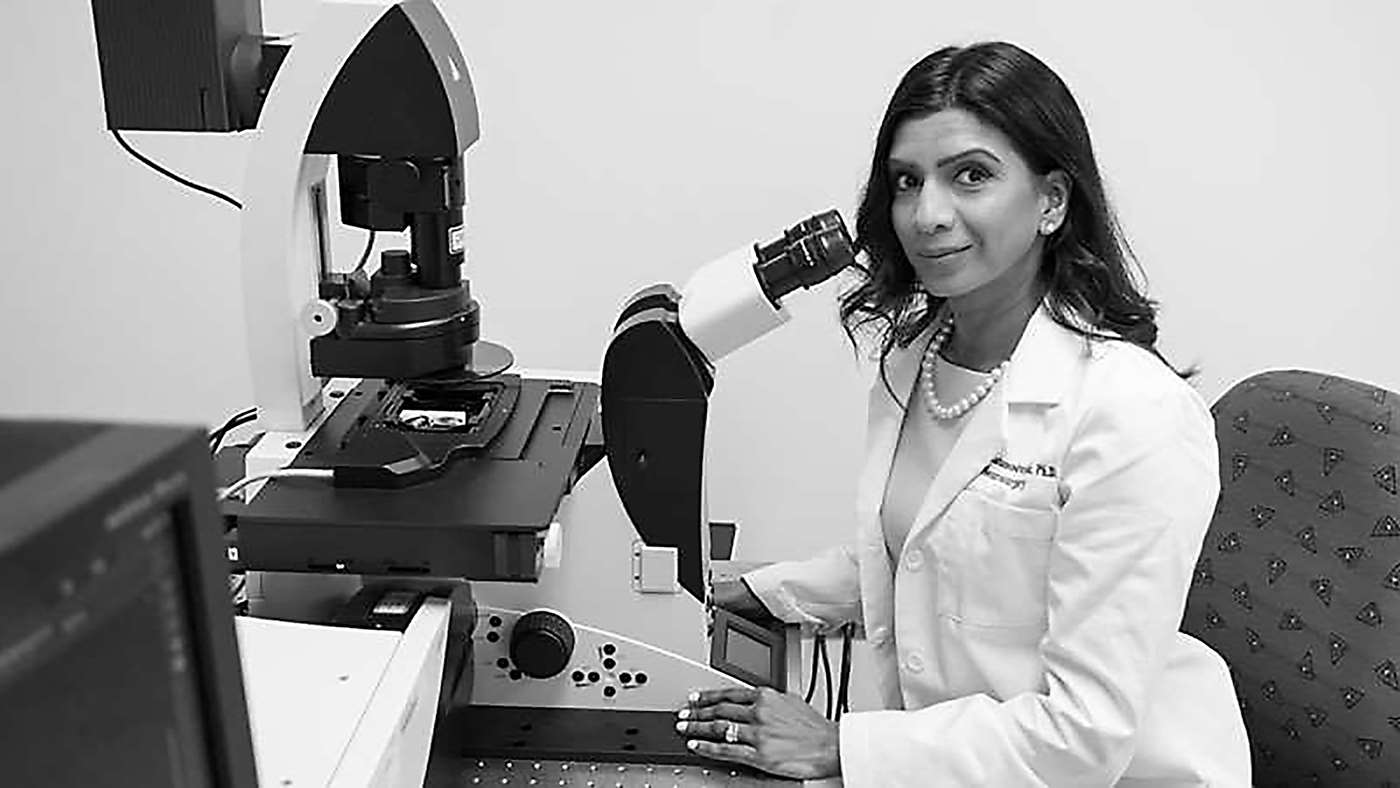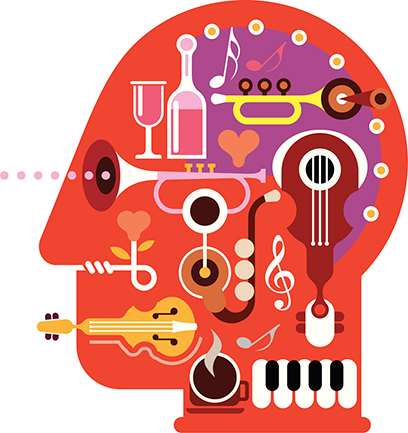Making Neurons “Dance” to Help Patients Recover

Dr. Kajana Satkunendrarajah
Music, often considered the universal language of emotions and expression, has long been intertwined with human culture and evolution. A paper published in Frontiers of Neuroscience in 2014 said that music “is intertwined with many basic human needs and is the result of thousands of years of neurobiological development.”
However, beyond its cultural significance and emotional impact, music also may hold the key to recovery for patients grappling with various neurological disorders.
Kajana Satkunendrarajah, PhD, associate professor of neurosurgery and member of π˚∂≥”∞‘∫’s Neuroscience Research Center, has discovered that neurons in the primary sensory cortex, which play a crucial role in initiating movement, also respond to discrete aspects of music.
Dr. Satkunendrarajah shares, “The universal responses of dancing, nodding one’s head and tapping a foot to music strongly suggest an inherent link between music and movement. Our laboratory research has demonstrated at both the cellular and circuit levels that this response extends beyond humans to animals, eliminating bias and affirming its cellular foundation.”
 Dr. Satkunendrarajah’s team has pinpointed a specific group of neurons – the pyramidal neurons located in the primary somatosensory cortex. These neurons previously have been recognized for their role in integrating human senses.
Dr. Satkunendrarajah’s team has pinpointed a specific group of neurons – the pyramidal neurons located in the primary somatosensory cortex. These neurons previously have been recognized for their role in integrating human senses.
Interestingly, the rhythmic structure of music can differentially modulate the excitability of these neurons. Sensory cortical neuronal activity is more significantly enhanced by music pieces that exhibit predictability.
“These ‘dance neurons,’ as we’ve informally dubbed them, have the remarkable capacity to influence movement based on their response to specific musical compositions,” explains Dr. Satkunendrarajah.
“Importantly, certain music has been shown to alleviate symptoms in patients, including a reduction in the frequency of seizures in individuals with epilepsy,” she continues.
Recently, Dr. Satkunendrarajah’s work was awarded a $1.58 million R01 grant from the . She and her team will investigate motor function recovery following spinal cord injury (SCI). Their primary objective is to unravel this novel neural pathway’s anatomical and functional intricacies. Subsequently, the team aims to harness this newfound understanding to pave the way for innovative methods to restore the ability to walk among individuals who have endured SCI.
Dr. Satkunendrarajah envisions that the significance of her research extends far beyond spinal cord injury recovery and believes it holds promise for other clinical specialties, transcending traditional boundaries. Through their pioneering efforts, the team aspires to broaden the concept of neuromodulation – moving beyond the conventional definition limited to devices delivering drugs or electrical stimulation. The goal is to encompass any intervention capable of precisely modulating neural activity, including the powerful medium of music.
The potential for precise targeting of neurons holds the promise of tailoring personalized treatments for conditions such as Parkinson’s disease, potentially reducing motor tremors. Moreover, utilization of highly predictable music could be explored as a means of producing highly synchronous neuronal firing, which could offer fresh avenues for therapeutic interventions. Future studies will investigate neuronal firing using scrambled or shifted music patterns (called “syncopation”), which have beats that may not sound as common to the human ear. Musicians use syncopation to surprise a listener and grab their attention.
Dr. Satkunendrarajah’s team hopes to find a similar response within the neurons they are studying and seeks to uncover the involvement of the sensory-cortical pathway in music-movement coupling. “This is extremely exciting,” she says. “Music guides movement and may be able to help caregivers bypass damaged or otherwise abnormal circuitry in the brain.”
– Chris Combs



